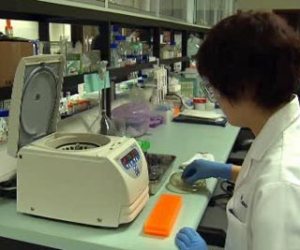Feb 14 2011
The researchers at Singapore’s Nanyang Technological University (NTU) would now be able to recreate an energy process that occurs in plants for producing fuel from sunlight and water.
The new Solar Fuels Lab, which is a unique institution in Asia was opened officially by Professor Bertil Andersson, the NTU President Designate, who is an expert in the field of artificial leaf technology. The researchers have been trying to identify suitable blends of chemical catalysts that could hasten the process of artificial photosynthesis, while utilizing minimum amount of energy. These would be employed in an instrument, which would be used for extracting huge quantities of hydrogen from water in the presence of sunlight. According to Andersson, the leaf contains chlorophyll with a lot of protein molecules. These molecules may be unstable in an artificial system. Hence it was essential to find stable components, which could be used in a technological machinery.
 NTU Scientist
NTU Scientist
The new lab at NTU plans to extract hydrogen fuel by utilizing solar energy. But in place of the conventional solar cell, the lab is trying to determine if low cost substances such as titanium dioxide and rust could capture solar energy in an efficient manner and split water into hydrogen and oxygen. James Barber, a visiting professor at NTU, stated that this reaction could be implemented immediately by using platinum or highly expensive semi-conductor materials. However, what was important was that cheap but robust materials should be made use of for implementing this reaction. Professor Barber is one of the dozen scientists at NTU, which include others such as Dr John Turner, Dr Heinz Frei and Professor Michael Gratzal.
The prototype is to be readied in three to five years by NTU. At present extraordinarily large amounts of energy are required for extracting miniscule amounts of hydrogen from water, and this is commercially an unviable proposition. This new device could decrease the reliance on crude oil and also eliminate the problems associated with climate change and global warming.